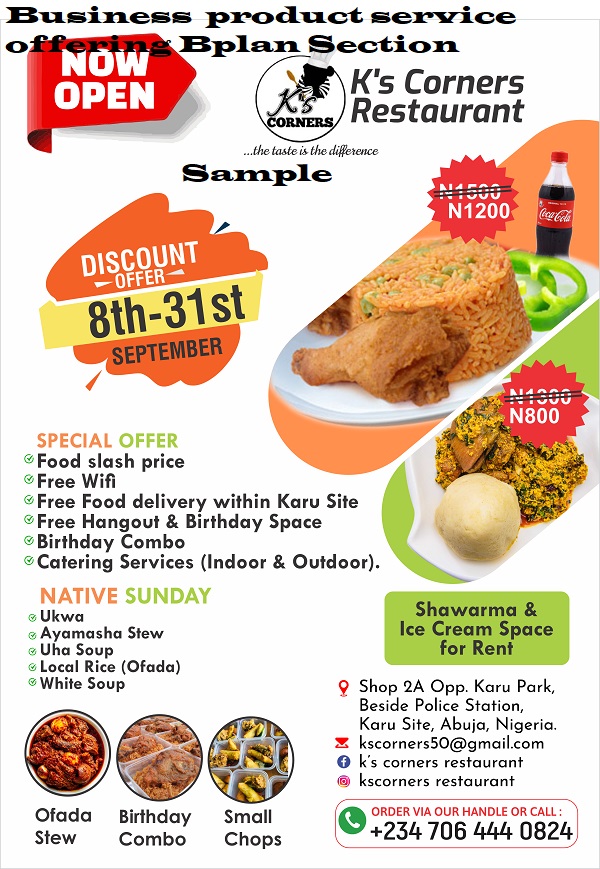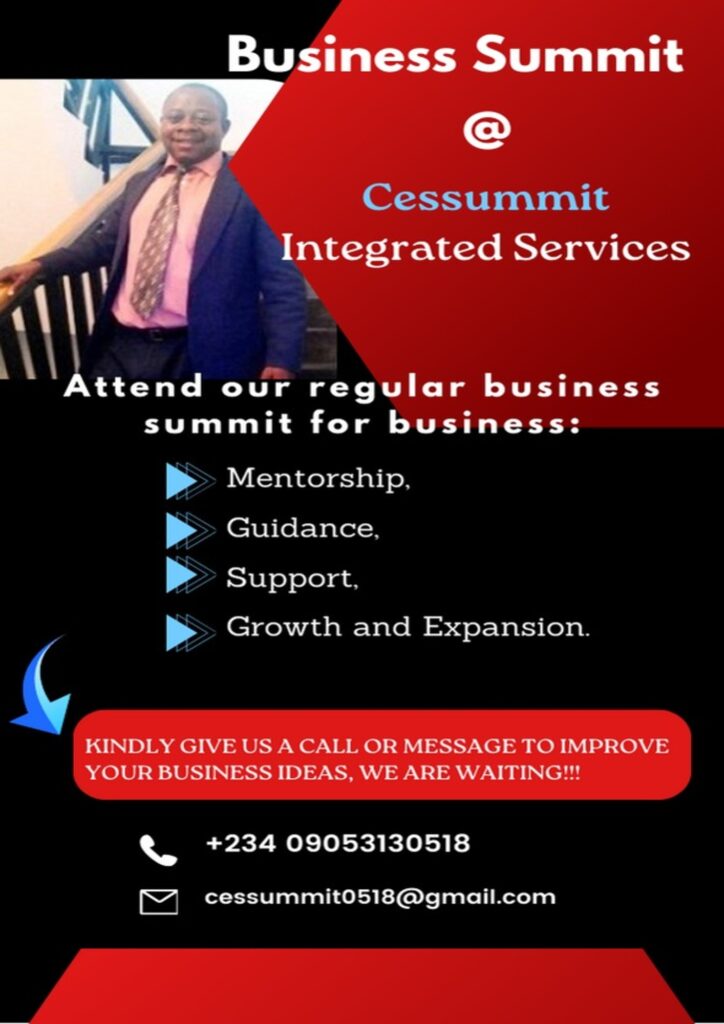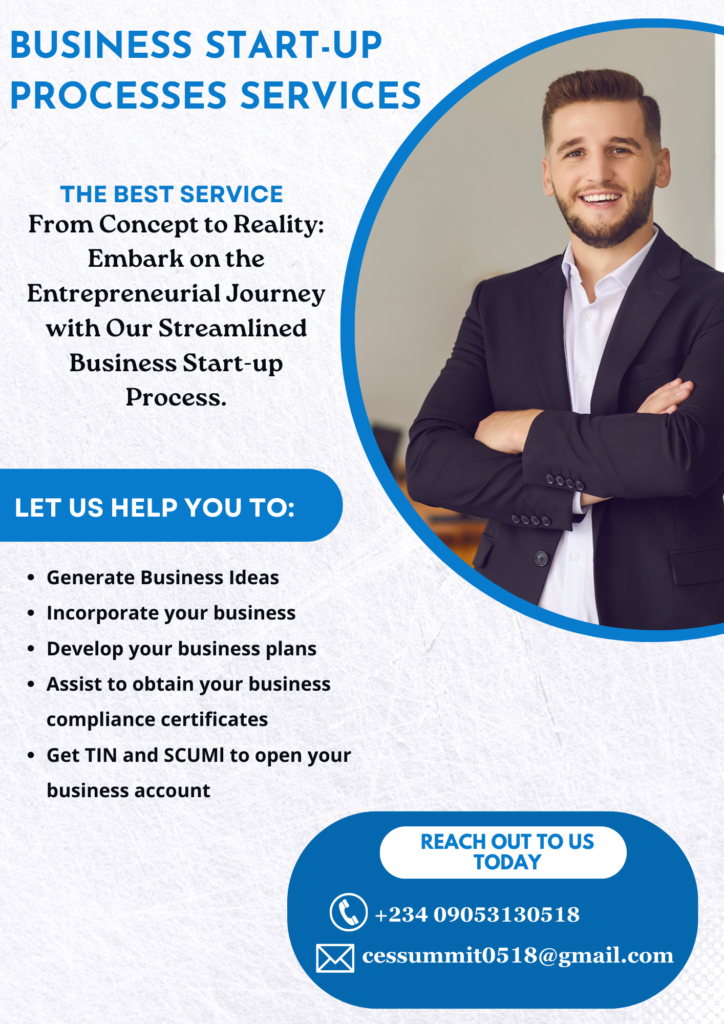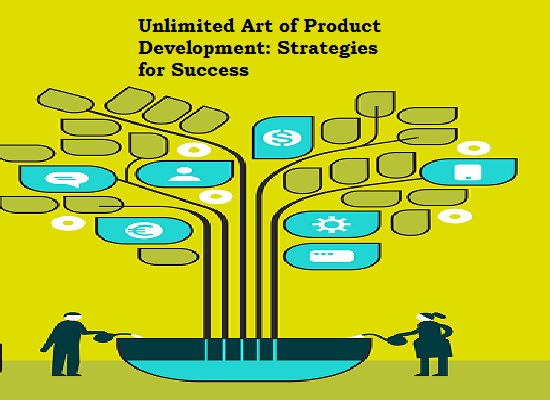
Unlimited Art of Product Development: Strategies for Success
Unlimited Art of Product Development: Strategies for Success – In the ever-evolving landscape of product development, where creativity and innovation reign supreme, the pursuit of success knows no bounds. The art of product development has transcended traditional boundaries and now embraces a world of unlimited possibilities. With emerging technologies, changing consumer demands, and fierce market competition, companies must navigate a complex ecosystem to ensure their products not only meet but exceed expectations. To thrive in this dynamic environment, businesses must embrace strategic approaches that foster creativity, encourage collaboration, and deliver exceptional products that captivate and delight consumers. This article delves into the realm of unlimited artistry in product development, unveiling strategies for success that empower companies to unlock their true potential and redefine what is possible in the realm of innovation.
Contents
- 1 Post Focus:
- 2 Now Get Started:
- 2.1 Introduction:
- 2.2 Unlimited Art of Product Development: Strategies for Success
- 2.3 Understanding the Market:
- 2.4 Unlimited Art of Product Development: Strategies for Success
- 2.5 Unlimited Art of Product Development: Strategies for Success
- 2.6 Cross-Functional Collaboration:
- 2.7 Agile Development Methodology:
- 2.8 Unlimited Art of Product Development: Strategies for Success
- 2.9 Design Thinking Approach:
- 2.10 Unlimited Art of Product Development: Strategies for Success
- 2.11 Unlimited Art of Product Development: Strategies for Success
- 2.12 Risk Management:
- 2.13 Unlimited Art of Product Development: Strategies for Success
- 2.14 Testing and Validation:
- 2.15 Unlimited Art of Product Development: Strategies for Success
- 2.16 Continuous Learning and Improvement:
- 2.17 Unlimited Art of Product Development: Strategies for Success
- 2.18 Conclusion:
- 2.19 Unlimited Art of Product Development: Strategies for Success
- 2.20 Read More here:
- 2.21 Finally, on Unlimited Art of Product Development: Strategies for Success:
- 2.22 Share this:
- 2.23 Like this:
Post Focus:
The Reasons for reading Unlimited Art of Product Development: Strategies for Success is the focus of this post. And, here are some of the reasons why you should read through this article.
- Stay Ahead of the Competition: In the highly competitive landscape of product development, staying ahead of the competition is crucial for business success. By reading “Unlimited Art of Product Development: Strategies for Success,” you can gain valuable insights into the latest strategies and techniques that can give your company an edge over competitors. This knowledge can help you identify new opportunities, develop innovative products, and outperform your rivals in the market.
- Foster Creativity and Innovation: Creativity and innovation are the lifeblood of successful product development. This article explores strategies that can unleash your team’s creative potential and foster a culture of innovation within your organization. By reading this resource, you’ll gain practical advice on how to generate fresh ideas, overcome creative blocks, and nurture a mindset that embraces experimentation and risk-taking.
- Optimize Product Development Processes: Efficient and effective product development processes are vital for bringing ideas to market successfully. “Unlimited Art of Product Development: Strategies for Success” offers valuable insights into streamlining your product development lifecycle, from ideation to launch. By learning about proven methodologies, agile approaches, and best practices, you can optimize your processes, reduce time-to-market, and enhance overall productivity.
Unlimited Art of Product Development: Strategies for Success
- Customer-Centric Approach: In today’s customer-centric marketplace, understanding and fulfilling consumer needs is essential. This article emphasizes the importance of placing the customer at the core of your product development efforts. By reading it, you’ll gain insights into methods for conducting market research, gathering customer feedback, and incorporating user-centric design principles. This customer-centric approach will enable you to develop products that resonate deeply with your target audience and increase customer satisfaction.
- Overcome Challenges and Mitigate Risks: Product development is fraught with challenges and risks. From technical hurdles to market uncertainties, navigating these obstacles can be daunting. “Unlimited Art of Product Development: Strategies for Success” guides on identifying potential pitfalls and mitigating risks throughout the product development journey. By being aware of common challenges and learning from real-world examples, you can make informed decisions, minimize setbacks, and increase your chances of success.
6. Inspire and Motivate Your Team: A motivated and inspired team is essential for driving successful product development. This article not only provides strategies for individual success but also explores techniques for inspiring and motivating your entire product development team. By implementing the suggested approaches, you can foster a collaborative and innovative environment that encourages team members to give their best and achieve remarkable results.
Unlimited Art of Product Development: Strategies for Success
By reading “Unlimited Art of Product Development: Strategies for Success,” you’ll equip yourself with valuable knowledge and practical strategies to navigate the ever-changing landscape of product development, unlock your company’s true potential, and achieve unprecedented success in the market.
And, now, what is Product Development?
Product development refers to the process of creating and bringing new or improved products to the market. It involves the entire life-cycle of a product, from conceptualization and design to manufacturing, marketing, and distribution. Product development encompasses a range of activities, including market research, ideation, prototyping, testing, and refinement.
The goal of product development is to identify and fulfill customer needs by designing and delivering innovative, high-quality, and commercially viable products. It requires a multidisciplinary approach, involving teams from various departments such as research and development, engineering, design, marketing, and sales.
The product development process typically follows a systematic and iterative approach, often referred to as the product development lifecycle. This lifecycle typically includes the following stages:
- Idea Generation: This stage involves brainstorming and generating ideas for new products or improvements to existing ones. It may involve market research, customer feedback, and analysis of industry trends to identify opportunities.
- Concept Development: Once ideas are generated, the most promising ones are further developed into product concepts. This includes defining the product’s features, benefits, target market, and value proposition.
- Design and Engineering: In this stage, the product concept is transformed into a tangible design. Engineers and designers work together to create detailed specifications, technical drawings, and prototypes.
- Testing and Validation: Prototypes or beta versions of the product are tested extensively to ensure functionality, performance, and user satisfaction. Feedback from testing helps identify areas for improvement.
Unlimited Art of Product Development: Strategies for Success
- Manufacturing and Production: Once the product design is finalized, it moves into the manufacturing phase. This involves selecting suppliers, setting up production processes, and ensuring quality control.
- Marketing and Launch: The product is prepared for launch, and marketing strategies are developed to create awareness, generate demand, and promote sales. This includes branding, packaging, pricing, and distribution planning.
- Post-launch Evaluation: After the product is launched, its performance is monitored, and customer feedback is collected. This information is used to assess the product’s success, identify areas for further improvement, and inform future product development efforts.
Effective product development requires a balance between creativity, market understanding, technical expertise, and strategic planning. It aims to deliver products that not only meet customer expectations but also create value for the company, drive revenue growth, and establish a competitive advantage in the marketplace.
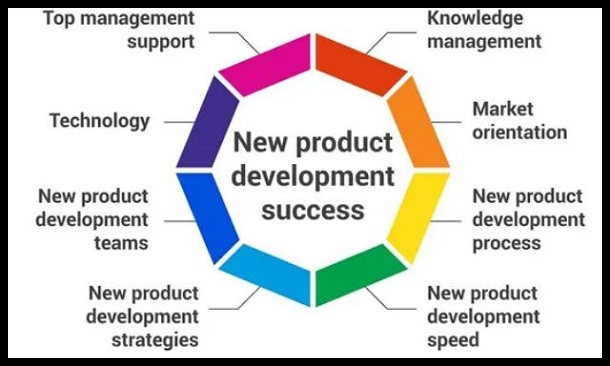
Unlimited Art of Product Development: Strategies for Success
Now Get Started:
Unlimited Art of Product Development: Strategies for Success is a must read by all. So, get on now reading.
Introduction:
So, it’s time to get started on Unlimited Art of Product Development: Strategies for Success by the Definition of the Art of product development. Importance of successful product development and the Overview of the Strategies for Success in product development.
It’s important to note that the art of product development encompasses the entire process of conceptualizing, designing, creating, and launching a new product or improving an existing one. It involves a combination of creativity, technical expertise, market understanding, and strategic thinking to transform ideas into tangible products that meet customer needs and drive business growth.
Importance of successful product development:
Successful product development is crucial for the long-term success and competitiveness of any organization. Here are a few key reasons why it is important:
- Meeting customer needs: Developing products that effectively address customer needs and preferences is essential for attracting and retaining customers. By understanding their requirements and pain points, organizations can create products that offer unique value and enhance customer satisfaction.
- Competitive advantage: In today’s dynamic business environment, organizations need to differentiate themselves from competitors. Successful product development enables companies to introduce innovative solutions, gain a competitive edge, and stay ahead in the market.
- Revenue growth: Introducing new products or improving existing ones can open up new revenue streams for organizations. A successful product that resonates with customers can drive increased sales, expand market share, and generate higher profits.
- Adaptation to market changes: Markets evolve, and customer preferences shift over time. By continually developing and refining products, organizations can adapt to changing market dynamics, embrace new technologies, and capitalize on emerging trends.
Unlimited Art of Product Development: Strategies for Success
Overview of strategies for success in product development:
To achieve success in product development, organizations can employ several strategies. Here’s an overview of some key ones:
- Market research and customer insights: Conducting thorough market research and gathering deep customer insights is essential. It helps identify unmet needs, market trends, and competitor offerings, enabling organizations to develop products that align with market demands.
- Cross-functional collaboration: Successful product development requires collaboration across different departments such as design, engineering, marketing, and manufacturing. Cross-functional teams facilitate effective communication, knowledge sharing, and streamlined processes.
- Agile and iterative approach: Adopting an agile and iterative approach allows for rapid prototyping, testing, and refinement of product concepts. This approach enables organizations to gather feedback early in the development cycle, make necessary adjustments, and reduce the risk of costly mistakes.
Unlimited Art of Product Development: Strategies for Success
- Design thinking: Design thinking emphasizes empathizing with users, defining problems, generating creative ideas, prototyping, and testing. This human-centered approach helps develop products that truly address user needs, enhance user experience, and drive customer satisfaction.
- Robust project management: Efficient project management is crucial to ensure the timely delivery of high-quality products. Employing project management methodologies such as Agile or Scrum can help manage resources, set realistic timelines, and track progress effectively.
- Continuous improvement: Product development should be seen as an ongoing process rather than a one-time event. Regularly gathering customer feedback, monitoring market trends, and making incremental improvements to existing products can drive sustained success.
By employing these strategies and focusing on delivering value to customers, organizations can enhance their product development efforts and increase their chances of creating successful products that meet market demands and drive business growth.
Unlimited Art of Product Development: Strategies for Success
Understanding the Market:
This is essentially done by Conducting market research and Identifying customer needs and pain points. So, Analyzing competitor products and market trends is imperative.
So, Conducting Market Research, Identifying Customer Needs and Pain Points, Analyzing Competitor Products and Market Trends
Conducting market research, identifying customer needs and pain points, and analyzing competitor products and market trends are critical steps in the product development process. They provide valuable insights that guide decision-making and help organizations develop products that align with market demands. Let’s explore these aspects in more detail:
- Conducting market research: Market research involves gathering and analyzing data about the target market, industry, and customers. It helps organizations gain a comprehensive understanding of market dynamics, trends, and opportunities. Here are some key steps in conducting market research:
- a. Define research objectives: Clearly define the goals and objectives of the research. Determine what information you seek to gather and how it will impact the product development process.
- b. Identify target market: Define the specific segment or group of customers you intend to target with your product. Understand their demographics, behaviors, preferences, and needs.
- c. Collect primary and secondary data: Primary data refers to firsthand information gathered through surveys, interviews, focus groups, or observations. Secondary data involves utilizing existing sources such as market reports, industry publications, and online databases.
- d. Analyze data: Once data is collected, analyze it to extract meaningful insights. Identify patterns, trends, and emerging opportunities that can guide product development decisions.
- Identifying customer needs and pain points: Understanding customer needs and pain points is crucial for developing products that provide value and solve their problems. Here are some approaches to identifying customer needs:
- a. Direct customer feedback: Engage with customers through surveys, interviews, or feedback sessions to understand their preferences, challenges, and expectations.
- b. Observations and ethnographic research: Observe how customers interact with existing products or study their behavior in real-life situations. This provides insights into their pain points and unmet needs.
- c. Social listening: Monitor online conversations, social media platforms, and customer reviews to identify common complaints, desires, and preferences.
- d. Customer segmentation: Divide your target market into distinct customer segments based on demographics, behaviors, or psychographics. This helps in tailoring products to specific customer needs.
- Analyzing competitor products and market trends: Analyzing competitor products and market trends is essential to gain a competitive advantage and identify gaps in the market. Here’s how you can do it:
- a. Competitor analysis: Study the products offered by your competitors. Evaluate their features, pricing, positioning, marketing strategies, and customer feedback. Identify areas where you can differentiate your product.
- b. SWOT analysis: Conduct a SWOT (Strengths, Weaknesses, Opportunities, Threats) analysis of your competitors to understand their market position, strengths, and weaknesses. This helps in identifying opportunities for your product.
- c. Market trends analysis: Stay updated with the latest market trends, emerging technologies, and industry developments. This helps in identifying opportunities or potential threats that could impact your product’s success.
- d. Benchmarking: Compare your product against industry benchmarks and best practices. Identify areas where your product can excel or where improvements are needed.
By conducting thorough market research, identifying customer needs, and analyzing competitor products and market trends, organizations can gain valuable insights to inform their product development strategies. This knowledge allows them to create products that address customer pain points, meet market demands, and stand out from the competition.
Unlimited Art of Product Development: Strategies for Success
Furthermore, Setting Clear Goals and Objectives:
So, do this by Defining the product vision and Establishing measurable goals and objectives. And, Creating a roadmap for product development.
Setting Clear Goals and Objectives: Defining the Product Vision, Establishing Measurable Goals and Objectives, Creating a Roadmap for Product Development
Setting clear goals and objectives is crucial in product development as it provides a direction and purpose for the development process. It helps align the efforts of the team, ensures focus, and allows for measurable progress tracking. Here’s how you can effectively define the product vision, establish measurable goals and objectives, and create a roadmap for product development:
- Defining the product vision: The product vision defines the ultimate purpose and direction of the product. It articulates the desired future state and the value the product aims to deliver to customers. Here are some steps to define the product vision:
- a. Identify the problem or opportunity: Clearly understand the problem or opportunity that the product seeks to address. Identify the key pain points or unmet needs that the product aims to solve.
- b. Define the value proposition: Determine the unique value that the product will provide to customers. Articulate the benefits and advantages that set the product apart from competitors.
- c. Align with the company’s mission and strategy: Ensure that the product vision aligns with the broader mission and strategy of the organization. It should contribute to the overall goals and objectives of the company.
- d. Communicate the vision: Communicate the product vision to stakeholders, team members, and other relevant parties. This ensures a shared understanding and alignment of purpose.
- Establishing measurable goals and objectives: Measurable goals and objectives provide a concrete framework for evaluating progress and success. They should be specific, achievable, measurable, relevant, and time-bound (SMART). Here’s how to establish such goals:
- a. Identify key performance indicators (KPIs): Determine the metrics and indicators that will measure the success of the product. These could include factors like revenue growth, customer acquisition, customer satisfaction, or product adoption rates.
- b. Break down goals into smaller objectives: Divide the overarching goals into smaller, actionable objectives. This helps in making progress manageable and provides clear milestones.
- c. Set realistic targets: Ensure that the goals and objectives are challenging yet attainable. Setting overly ambitious goals can lead to frustration and demotivation, while setting easily achievable goals may hinder progress.
- d. Align with the product vision: Ensure that the goals and objectives directly contribute to the fulfillment of the product vision. They should reflect the desired outcomes and align with the overall product strategy.
- Creating a roadmap for product development: A roadmap provides a visual representation of the product’s development journey. It outlines the timeline, milestones, and key activities necessary to achieve the product goals. Here are some steps to create an effective product roadmap:
- a. Prioritize features and initiatives: Determine the most critical features or initiatives that align with the product vision and objectives. Prioritize them based on factors such as customer needs, market demand, and business impact.
- b. Define timelines and milestones: Establish a timeline that outlines the key stages of product development. Identify major milestones and deliverables that need to be achieved at each stage.
- c. Consider dependencies and constraints: Take into account any dependencies or constraints that may impact the product development process. These could include technological limitations, resource availability, or regulatory requirements.
- d. Communicate the roadmap: Share the product roadmap with stakeholders, team members, and other relevant parties. It helps in aligning expectations, managing dependencies, and fostering collaboration.
By defining a clear product vision, establishing measurable goals and objectives, and creating a roadmap, organizations can provide a sense of direction and purpose to their product development efforts. This helps in aligning the team, tracking progress, and ensuring that the product development process remains focused and effective.
Unlimited Art of Product Development: Strategies for Success
Cross-Functional Collaboration:
This you must do. Building a diverse and skilled team and Promoting effective communication and collaboration. Then, Encouraging interdisciplinary problem-solving.
Cross-Functional Collaboration:
Building a Diverse and Skilled Team, Promoting Effective Communication and Collaboration, Encouraging Interdisciplinary Problem-Solving
Cross-functional collaboration is crucial in product development as it brings together diverse perspectives, expertise, and skills from various departments or disciplines. It enables effective problem-solving, innovation, and efficient execution. Here’s how you can foster cross-functional collaboration within your team:
- Building a diverse and skilled team: A diverse team brings a variety of experiences, knowledge, and viewpoints to the table, which can lead to more creative and well-rounded solutions. Consider the following when building your team:
- a. Identify required skill sets: Determine the skills and expertise needed for successful product development. Look for individuals with a range of technical, creative, analytical, and interpersonal skills.
- b. Embrace diversity: Seek team members with diverse backgrounds, experiences, and perspectives. This diversity can lead to more robust problem-solving and a broader understanding of customer needs.
- c. Encourage interdisciplinary collaboration: Include team members from different functional areas or disciplines such as design, engineering, marketing, and sales. This diversity facilitates the cross-pollination of ideas and expertise.
- d. Foster a culture of continuous learning: Encourage team members to continually enhance their skills through training, workshops, and knowledge sharing. This ensures a dynamic and adaptable team.
- Promoting effective communication and collaboration: Clear and effective communication is essential for successful cross-functional collaboration. Here are some practices to promote effective communication and collaboration:
- a. Establish open channels of communication: Encourage team members to share ideas, concerns, and feedback openly. Foster an environment where everyone feels comfortable expressing their thoughts.
- b. Foster transparency: Ensure that information is shared openly and consistently among team members. This includes project updates, milestones, challenges, and relevant data.
- c. Utilize collaboration tools: Implement collaboration tools and platforms that facilitate communication and document sharing. These can include project management software, chat apps, and shared document repositories.
- d. Schedule regular cross-functional meetings: Organize regular meetings or workshops where team members from different departments can come together to discuss progress, and challenges, and brainstorm solutions.
- Encouraging interdisciplinary problem-solving: Interdisciplinary problem-solving brings together diverse perspectives to find innovative solutions. Here’s how you can encourage interdisciplinary problem-solving within your team:
- a. Promote a shared understanding: Encourage team members to understand and appreciate the different perspectives and expertise brought by their colleagues. This helps in creating a foundation for collaborative problem-solving.
- b. Foster a culture of curiosity and collaboration: Encourage team members to explore ideas outside their core expertise and engage in cross-functional discussions. This sparks creativity and fosters collaboration.
- c. Encourage cross-functional collaboration on projects: Assign projects or tasks that require collaboration between team members from different departments. This promotes interdisciplinary problem-solving and breaks down silos.
- d. Facilitate knowledge sharing: Create opportunities for team members to share their knowledge, experiences, and best practices with each other. This can be done through workshops, presentations, or mentoring programs.
Unlimited Art of Product Development: Strategies for Success
By building a diverse and skilled team, promoting effective communication and collaboration, and encouraging interdisciplinary problem-solving, organizations can harness the collective intelligence and expertise of their teams. This leads to more innovative and well-rounded solutions in product development and fosters a collaborative and high-performing work culture.
Agile Development Methodology:
Here is the Overview of agile principles and methodologies. Then, followed by Embracing iterative and incremental development. And, Incorporating customer feedback and adapting quickly.
Agile development methodology is a flexible and collaborative approach to software development that emphasizes iterative and incremental development, customer involvement, and the ability to adapt to changing requirements. It promotes a more efficient and effective way of building software by focusing on delivering value early and frequently.
Agile Principles:
- Customer Satisfaction: The highest priority is to satisfy the customer through early and continuous delivery of valuable software.
- Iterative and Incremental Development: Projects are divided into small iterations or sprints, where each iteration results in a potentially shippable product increment.
- Embrace Change: Agile teams welcome changing requirements, even late in the development process, and adapt their plans accordingly.
- Collaboration and Communication: Close and constant collaboration between team members and stakeholders is essential for success.
- Self-Organizing Teams: Agile teams are empowered to self-organize, make decisions, and find the best ways to accomplish their goals.
- Continuous Improvement: Regular reflection and adjustment of processes promote continuous improvement and efficiency.
- Face-to-Face Communication: In-person communication is considered the most effective way to convey information within an agile team.
- Working Software: Working software is the primary measure of progress and success.
- Sustainable Pace: Agile promotes a sustainable work pace to maintain productivity and prevent burnout.
- Technical Excellence: Emphasizing good design, technical practices, and continuous integration to maintain a high-quality codebase.
Unlimited Art of Product Development: Strategies for Success
Agile Methodologies:
- Scrum: Scrum is one of the most popular agile methodologies. It uses short iterations (sprints) and includes defined roles (such as product owner, scrum master, and development team) to facilitate collaboration and deliver value incrementally.
- Kanban: Kanban focuses on visualizing the workflow and limiting work in progress (WIP). It provides a continuous flow of work, enabling teams to deliver quickly and respond to changing priorities.
- Extreme Programming (XP): XP emphasizes close customer collaboration, frequent releases, and continuous testing and refactoring. It also promotes pair programming, collective ownership, and sustainable development practices.
- Lean Software Development: Lean software development aims to eliminate waste, maximize value, and optimize flow. It emphasizes customer value, continuous improvement, and respect for people.
- Dynamic Systems Development Method (DSDM): DSDM is an agile framework that provides an iterative and incremental approach to software development. It focuses on delivering business value and has defined roles, timeboxes, and prioritization techniques.
- Crystal: Crystal is a family of methodologies designed for different project sizes and priorities. It emphasizes simplicity, frequent delivery, and communication within teams.
- Feature-Driven Development (FDD): FDD is an iterative and incremental agile methodology that focuses on developing features in short time frames. It provides a systematic approach to feature delivery, with a strong emphasis on domain modeling.
Overall, agile methodologies provide a flexible and adaptive framework for software development, enabling teams to deliver value quickly, respond to customer feedback, and continuously improve their processes.
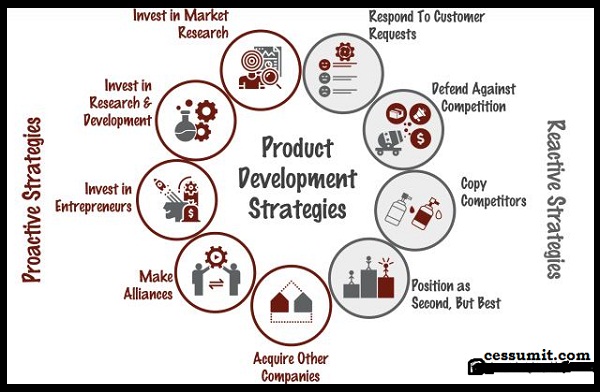
Unlimited Art of Product Development: Strategies for Success
Design Thinking Approach:
Furthermore, Understanding the user-centered design process and Conducting user research and prototyping are needed. So, also Iterative design and continuous improvement.
Design Thinking is a human-centered approach to problem-solving and innovation that focuses on understanding users, and their needs, and creating solutions that meet those needs effectively. It emphasizes empathy, creativity, and iterative prototyping to arrive at innovative and user-centric solutions.
User-Centered Design Process:
- Empathize: The first step is to understand the users and their needs by empathizing with them. This involves conducting research, interviews, observations, and immersing yourself in their experiences to gain insights into their perspectives and challenges.
- Define: Based on the insights gained from the empathy phase, define the core problem or challenge that needs to be addressed. Formulate a problem statement that captures the essence of the issue and sets the direction for the design process.
- Ideate: In this phase, generate a wide range of ideas and potential solutions to the defined problem. Encourage creativity and open-mindedness, and use brainstorming techniques, sketches, and other ideation methods to explore different possibilities.
- Prototype: Create low-fidelity prototypes of the potential solutions to bring ideas to life. Prototypes can be physical or digital representations that allow users to interact with and provide feedback on the proposed concepts. The focus is on quickly and iteratively building and testing prototypes to learn and refine the design.
Unlimited Art of Product Development: Strategies for Success
- Test: Test the prototypes with real users and gather feedback. Observe how users interact with the prototypes, listen to their feedback and insights, and use that information to iterate and refine the designs.
- Iterate: Based on the feedback received during the testing phase, make necessary improvements and refinements to the design. Iterate through multiple cycles of prototyping, testing, and refining to continually enhance the solution.
- Implement: Once the design has been thoroughly tested and refined, move forward with implementing the solution. Develop the final product or service based on the insights gained from the iterative design process.
- Evaluate: After the implementation, evaluate the effectiveness of the solution. Measure its impact, gather user feedback, and assess whether it successfully addressed the defined problem. Use the evaluation results to inform future iterations and improvements.
Unlimited Art of Product Development: Strategies for Success
Key Principles of Design Thinking:
- Human-Centered: Design Thinking places the user at the center of the design process, ensuring that solutions are tailored to their needs and desires.
- Empathy: Understanding and empathizing with users is crucial for uncovering meaningful insights and designing solutions that resonate with them.
- Iterative and Agile: Design Thinking encourages an iterative and agile approach, allowing for rapid prototyping, testing, and refinement to continuously improve the design.
- Collaboration: Collaboration and multidisciplinary teamwork are vital for leveraging diverse perspectives and expertise to arrive at innovative solutions.
- Creativity and Open-Mindedness: Design Thinking encourages a free flow of ideas and creative thinking, challenging assumptions and exploring new possibilities.
- Bias Towards Action: Design Thinking emphasizes taking action and building prototypes early in the process to learn and gather feedback rather than solely relying on theoretical discussions.
By embracing the user-centered design process, conducting thorough user research, leveraging prototyping for iterative design, and continuously seeking feedback and improvement, Design Thinking helps teams create innovative solutions that truly meet user needs.
Unlimited Art of Product Development: Strategies for Success
Risk Management:
Now, consider Identifying and assessing potential risks. Developing contingency plans and mitigation strategies. And, Regular monitoring and adaptation to changing circumstances.
So, Risk management is a systematic process of identifying, assessing, and managing potential risks to minimize their impact on a project or organization. It involves proactive planning, developing contingency plans, and continuously monitoring and adapting to changing circumstances to ensure the achievement of objectives.
Key Steps in Risk Management:
- Risk Identification: Identify and document potential risks that could impact the project or organization. This involves brainstorming sessions, reviewing historical data, conducting risk assessments, and involving stakeholders to capture a comprehensive list of risks.
- Risk Assessment: Analyze and assess the identified risks based on their probability of occurrence and potential impact. Prioritize risks based on their severity and likelihood to focus resources on the most significant ones. This assessment helps in understanding the overall risk landscape and enables informed decision-making.
- Risk Response Planning: Develop strategies to manage identified risks. There are four common risk response strategies:
- Avoidance: Eliminate the risk by taking actions to prevent its occurrence.
- Mitigation: Reduce the probability or impact of the risk through preventive measures.
- Transfer: Shift the risk to a third party, such as through insurance or outsourcing.
- Acceptance: Acknowledge the risk and decide to tolerate its potential impact.
- Contingency Planning: Develop contingency plans for high-priority risks. These plans outline specific actions and steps to be taken if the risk materializes. Contingency plans enable quick and effective responses, minimizing the impact of risks when they occur.
- Risk Monitoring and Review: Continuously monitor identified risks throughout the project or organizational lifecycle. Regularly review and update the risk register, reassess the risks, and track the effectiveness of risk responses. This ensures that risks are kept under control, new risks are identified, and appropriate actions are taken as needed.
- Adaptation and Learning: Embrace a flexible and adaptive approach to risk management. As circumstances change, new risks may emerge, and existing risks may evolve. It is essential to adapt risk management strategies accordingly and learn from past experiences to improve future risk management practices.
Unlimited Art of Product Development: Strategies for Success
Key Principles of Risk Management:
- Proactive Approach: Identify and address risks proactively rather than waiting for them to occur.
- Comprehensive Risk Assessment: Thoroughly analyze and assess risks to understand their potential impact and prioritize mitigation efforts effectively.
- Stakeholder Involvement: Engage relevant stakeholders in the risk management process to ensure diverse perspectives and expertise are considered.
- Continuous Monitoring: Regularly monitor risks to identify any changes, new risks, or emerging threats.
- Integrated Planning: Integrate risk management into overall project or organizational planning and decision-making processes.
- Clear Communication: Effectively communicate risks and mitigation strategies to stakeholders, ensuring shared understanding and alignment.
By following a structured risk management approach, organizations can anticipate potential risks, develop effective strategies to mitigate them, and adapt to changing circumstances, ultimately minimizing the negative impact of risks on the project or organizational success.
Unlimited Art of Product Development: Strategies for Success
Testing and Validation:
Another aspect is testing and validation. So, Conducting thorough product testing, Gathering user feedback, and conducting usability testing becomes paramount. Then, Iterative refinement based on test results is also essential.
So, Testing and validation are essential components of the product development process. They involve systematically evaluating the product to ensure it meets the desired quality standards, functionality requirements, and user expectations. This process includes conducting thorough testing, gathering user feedback, and iteratively refining the product based on test results.
- Test Planning: Develop a comprehensive test plan that outlines the testing objectives, scope, test cases, and test environment. Determine the testing techniques and methodologies to be used, such as unit testing, integration testing, system testing, and acceptance testing.
- Test Design: Design test cases and test scenarios based on the requirements and specifications of the product. Define the expected outcomes and success criteria for each test. Consider both functional and non-functional aspects of the product during test design.
- Test Execution: Execute the planned tests, following the defined test cases and scenarios. Record the results of each test, including any observed defects or issues. Use appropriate tools and testing frameworks to automate the testing process where feasible to improve efficiency and reliability.
Unlimited Art of Product Development: Strategies for Success
- Defect Reporting and Management: Document and report any identified defects or issues encountered during testing. Capture relevant information, such as steps to reproduce the defect, screenshots, and logs, to aid in defect resolution. Prioritize and manage defects using a defect tracking system, ensuring timely resolution.
- User Feedback and Usability Testing: Collect user feedback through surveys, interviews, or usability testing sessions. Gather insights on user experiences, pain points, and suggestions for improvement. Usability testing involves observing users interacting with the product to identify usability issues and refine the user interface and overall user experience.
- Regression Testing: Perform regression testing after defect fixes or enhancements to ensure that existing functionality has not been negatively impacted. Re-run previously executed tests to verify that the changes have not introduced new issues or caused regression in the product.
- Iterative Refinement: Analyze the results of testing, user feedback, and usability testing to identify areas for improvement. Iterate on the product design, development, and testing based on the insights gained. Implement necessary changes, retest the modified areas, and repeat the testing process until the desired quality and functionality are achieved.
Unlimited Art of Product Development: Strategies for Success
- Release Readiness Assessment: Conduct a final assessment to determine if the product is ready for release. Evaluate the test results, defect resolution status, and overall quality to make an informed decision on whether to proceed with the release or continue further refinement.
- Continuous Testing and Monitoring: Even after product release, establish mechanisms for ongoing testing and monitoring. Regularly monitor the product’s performance, gather user feedback, and conduct periodic testing to address any potential issues or improvements.
By following a comprehensive testing and validation process, organizations can identify and rectify defects, improve the user experience, and ensure that the product meets the desired quality standards. Iteratively refining the product based on testing results and user feedback leads to a more robust and user-centric final product.
Unlimited Art of Product Development: Strategies for Success
Continuous Learning and Improvement:
Continuous Learning and Improvement can not be overemphasized. So, do Analyze product performance and customer feedback. Iterative optimization and feature enhancements and Embracing a culture of innovation and adaptability.
Continuous learning and improvement are key components of a successful and innovative organization. It involves analyzing product performance, gathering customer feedback, making iterative optimizations and enhancements, and fostering a culture of innovation and adaptability.
- Data Analysis: Collect and analyze relevant data to gain insights into product performance. This includes metrics such as user engagement, conversion rates, customer satisfaction, and any other key performance indicators. Identify trends, patterns, and areas of improvement based on the data analysis.
- Customer Feedback: Gather feedback from customers through various channels such as surveys, interviews, support tickets, and social media. Actively listen to customer needs, pain points, and suggestions for improvement. Use this feedback to identify areas for enhancement and prioritize improvements based on customer priorities.
- Iterative Optimization: Make iterative changes and optimizations to the product based on data analysis and customer feedback. Prioritize improvements that align with customer needs and provide the most value. Adopt an agile development approach to implement changes in small increments and continuously test and validate the impact of the optimizations.
- A/B Testing: Use A/B testing or similar techniques to compare different versions or features of the product and determine which performs better. By testing variations with a subset of users, you can gather quantitative data on user preferences, behavior, and impact on key metrics. This helps in making data-driven decisions and optimizing the product experience.
- Feature Enhancements: Continuously enhance and expand product features based on customer needs and market trends. Regularly evaluate the competitive landscape and industry advancements to identify opportunities for innovation and differentiation. Collaborate with cross-functional teams to ideate and prioritize new feature developments.
- Culture of Innovation: Foster a culture of innovation within the organization by encouraging creativity, risk-taking, and continuous learning. Provide channels and platforms for employees to share ideas, collaborate, and experiment. Celebrate and recognize innovative thinking and successes. Create an environment where innovation is valued, and employees feel empowered to contribute to the improvement of products and processes.
Unlimited Art of Product Development: Strategies for Success
- User Experience (UX) Design: Prioritize and invest in UX design to create intuitive, user-friendly, and delightful experiences. Incorporate user-centered design principles, conduct user research, and usability testing to understand user needs and preferences. Continuously refine the user interface and interaction patterns based on feedback and usability insights.
- Agile and Adaptive Approach: Embrace an agile mindset and methodologies that allow for flexibility and adaptation. Emphasize short development cycles, frequent releases, and feedback loops to quickly learn and iterate. Continuously monitor market trends, technological advancements, and customer preferences to adapt the product strategy and roadmap accordingly.
- Post-Launch Evaluation: Evaluate the impact of product changes and enhancements after implementation. Measure key metrics, monitor user feedback, and compare against the expected outcomes. Identify areas of success and areas for further improvement. Use this evaluation to inform future iterations and prioritize future enhancements.
By continuously learning from data, customer feedback, and market trends, and embracing an iterative and adaptive approach, organizations can drive continuous improvement and innovation in their products. Fostering a culture of innovation and providing the necessary resources and support for experimentation and learning is crucial to creating a sustainable competitive advantage.
Unlimited Art of Product Development: Strategies for Success
Conclusion:
This conclusion is a Recap of the strategies for success in product development. The Importance of continuous learning and Improvement. Encouragement to embrace the unlimited potential of the art of product development.
In conclusion, successful product development relies on a combination of strategies aimed at delivering high-quality solutions that meet customer needs and drive business growth. Continuous learning and improvement play a vital role in this process, enabling organizations to stay competitive, adapt to changing circumstances, and innovate effectively.
Unlimited Art of Product Development: Strategies for Success
By embracing iterative and incremental development methodologies, such as Agile, organizations can ensure that products are developed flexibly and adaptively. This approach allows for quick feedback loops, iterative refinement, and the ability to respond swiftly to evolving customer requirements.
Incorporating customer feedback and user-centered design principles, as seen in Design Thinking, helps organizations create products that truly resonate with their target audience. Through user research, prototyping, and usability testing, organizations gain valuable insights into user needs and preferences, which can drive meaningful product enhancements and improvements.
Risk management is crucial to identify, assess, and mitigate potential risks that can impact the success of product development efforts. By adopting a proactive approach and developing contingency plans, organizations can effectively manage risks and minimize their negative impact.
Unlimited Art of Product Development: Strategies for Success
Thorough product testing and validation ensure that the developed product meets the desired quality standards. Gathering user feedback and conducting usability testing enable organizations to refine the product iteratively, resulting in an improved user experience and overall satisfaction.
Finally, fostering a culture of innovation and adaptability is essential for sustained success in product development. Encouraging creativity, embracing new ideas, and providing an environment that values continuous learning and improvement empower teams to unlock the unlimited potential of the art of product development.
By combining these strategies, organizations can create products that not only meet customer needs but also exceed expectations, driving customer satisfaction and loyalty. Continuously striving for excellence, embracing innovation, and leveraging the power of continuous learning position organizations to thrive in an ever-evolving market landscape.

Unlimited Art of Product Development: Strategies for Success
Read More here:
- How Digital Currencies Impact Business Regulations in Nigeria
- Unlocking the Power of Blockchain: A Guide for Entrepreneurs
- Driving Business Growth through Effective Product Development
- Authentic Sample Business Proposal for Cement Supply Business
- How to Write Winning Proposals that Close Deals
- How to Raise Funds for Your Project by Crowdfunding
- Cessummit.com Services Offerings: What we do & How
- Profitable Business Idea
Finally, on Unlimited Art of Product Development: Strategies for Success:
In the dynamic and ever-changing landscape of product development, success lies in embracing the unlimited potential of the art itself. By implementing strategies such as Agile methodologies, user-centered design, risk management, and continuous learning and improvement, organizations can navigate the complexities of product development and unlock new possibilities. This art requires a delicate balance of creativity, adaptability, and customer-centricity to deliver innovative solutions that meet the evolving needs of the market. By embracing the art of product development, organizations can create remarkable products that drive customer satisfaction, propel business growth, and establish a lasting impact in the world.
